#vallewton
Text

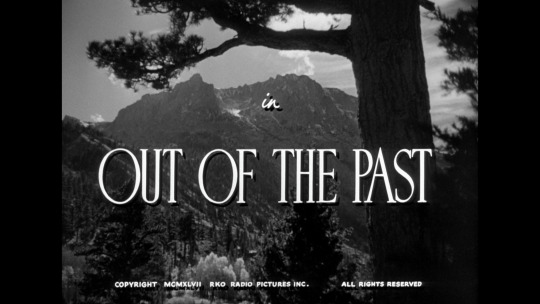


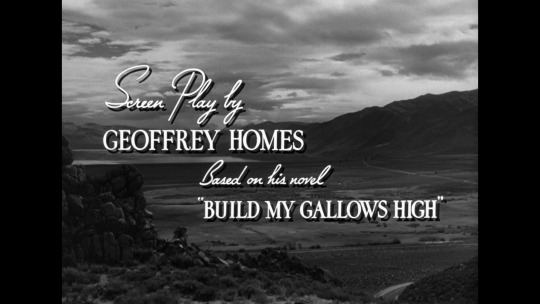

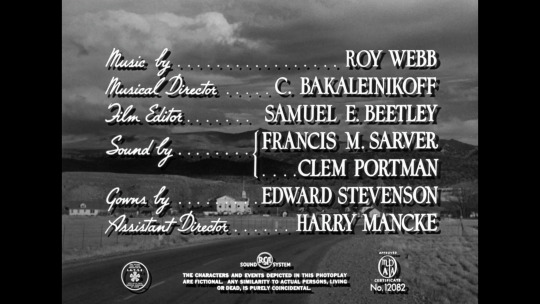


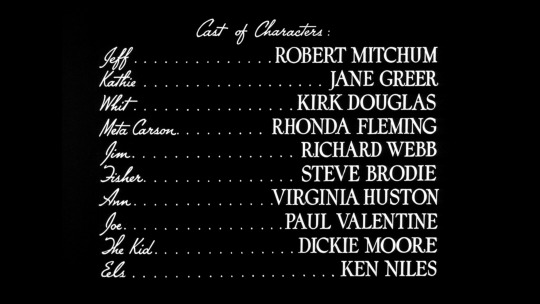

#jacquestourneur#filmnoir#cinema#tomconway#outofthepast#vallewton#catpeople#kentsmith#rkoradiopictures#simonesimon#horrorfilm#robertmitchum#horrormovies#noir#cinephilecommunity#cinephile#classicmovie#kirkdouglas#actricedujour#nightofthedemon#janegreer#genetierney#films#actress#actrice#georgeroyhill#michaelcurtiz#culte#cinegenres#ottopreminger
1 note
·
View note
Photo
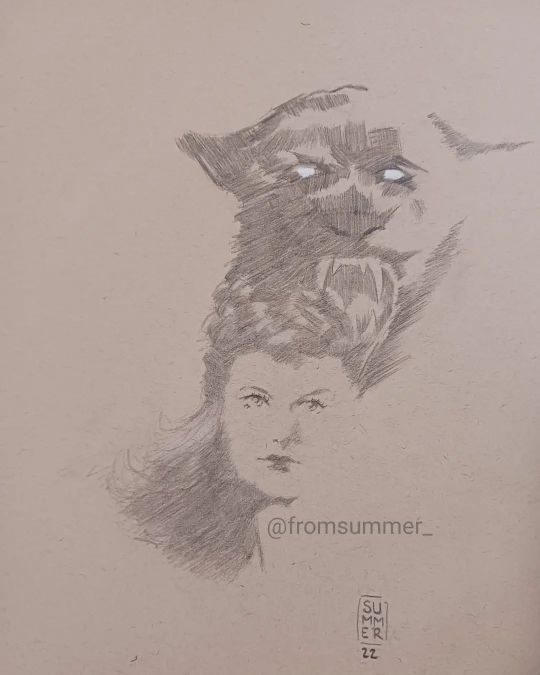
🐈⬛🐈⬛🐈⬛🐈⬛ Val Lewton's classic Cat People (1942) from director Jacques Tourneur. Starring Simone Simon as the tragic feline predator. /#catpeople #vallewton #jacquestourneur #simonesimon #rko #horrormovies #horrorfan #horrorart #fanart #illustration #classichorror #oldhollywood #classicfilm #halloweenmovies #artistsoninstagram #artgram #tonedpaper #prismacolor #cinephile / https://www.instagram.com/p/CjNqE-qLl6B/?igshid=NGJjMDIxMWI=
#catpeople#vallewton#jacquestourneur#simonesimon#rko#horrormovies#horrorfan#horrorart#fanart#illustration#classichorror#oldhollywood#classicfilm#halloweenmovies#artistsoninstagram#artgram#tonedpaper#prismacolor#cinephile
0 notes
Text
Betsy Connell believed she had seen strange behavior from her patients, but nothing in her training and experience has prepared her for the voodoo, horror and walking undead of a Caribbean island in I Walked with a Zombie! Who said the dead don’t walk? Connell (Frances Dee) travels to the Caribbean to care for the comatose wife of plantation owner Paul Holland (Tom Conway). But as Connell starts to fall in love with Holland, she gradually realizes that her patient is not comatose: She neither lives nor dies, existing as something not quite human and not quiet demon.
Director: Jacques Tourneur
Producer: ValLewton
Writer Inez Wallace
Cast: Frances Dee, James Ellison, Tom Conway, Edith Barrett, James Bell, Christine Gordon, Theresa Harris, Sir Lancelot, Darby Jones, Jeni Le. Release date: April 30, 1943
#frances dee#james ellison#tom conway#i walked with a zombie#old hollywood#cult classic#cult cinema#golden age of hollywood#silver screen legends#silver screen goddess#classic film#classic#natural beauty
0 notes
Photo

Horror Movie Marathon (2019) October 19th 45. The Leopard Man (1943) Directed by Jacques Tourneur #theleopardman #jacquestourneur #vallewton #dvd (at Baltimore, Maryland) https://www.instagram.com/p/B3z7nAGgZp8/?igshid=1u183j79a9ygw
0 notes
Photo
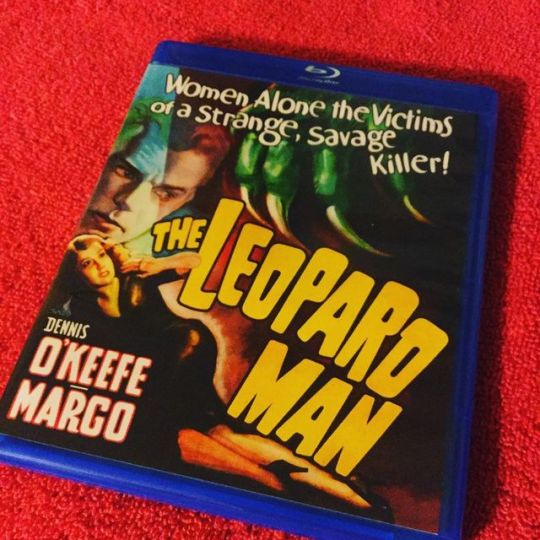
#screamfactory plunder the #wb vaults for more #vallewton magic with the #jacqueturner directed THE LEOPARD MAN (1943) on 7/30 https://www.instagram.com/p/BzmfeZLlSbj/?igshid=m054hzvmn9hw
0 notes
Photo
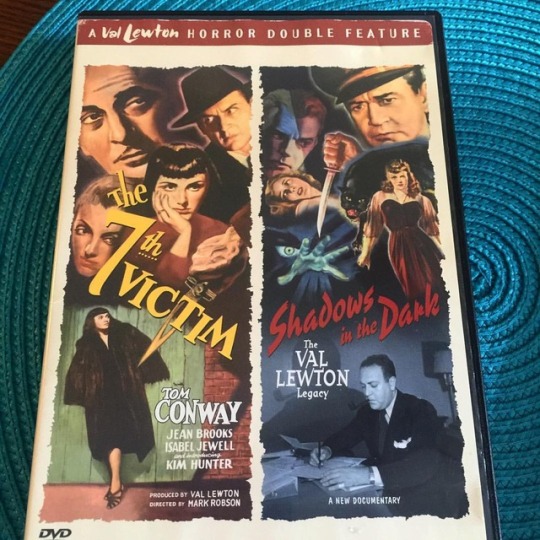
Victory!!! My Val Lewton boxset had a manufacturing defect and my copy of The 7th Victim wouldn’t play, but voila! I finally found a replacement copy! (The set is sadly long out of print and this was no easy feat single copies go for upwards of $70 and that is insane) This film is fantastic and I’m happy to a new copy (affordable) #film #noir #suspense #horror #cultclassic #vallewton (at Honolulu, Hawaii) https://www.instagram.com/p/Bs2XCnhHAwB/?utm_source=ig_tumblr_share&igshid=fwhs1aocg5n3
0 notes
Text
Horror in Shadow: CAT PEOPLE Turns 75
New Post has been published on https://nofspodcast.com/horror-shadow-cat-people-turns-75/
Horror in Shadow: CAT PEOPLE Turns 75
When we think of classic horror — real vintage, black and white horror of the 30s and 40s, we don’t often think scary. We think of the Universal Monsters. Deservedly lauded and beloved as those films are, they aren’t particularly frightening. Universal’s horror output was revolutionary, heavy on atmosphere, brimming with brilliant themes and bold character studies. But their monsters were so in your face, the primary effect was more disturbing than chilling.
Having been raised on the Universal Monster films, I never expected a horror film from the 40’s to genuinely scare me. I love Universal Horror, and the silent horror before. I love campy 50’s horror and the technicolor dreams of Hammer Horror. But in my mind, these are all about the glorious atmosphere. As a young horror fan, I always assumed truly scary horror began in the 60’s and came to full fruition in the 70’s. All that changed when I saw Cat People (1942).
To be specific, I saw a clip of Cat People. I was a teenage film nerd, turning on TCM after school as I often did. The channel was between features, and so I tuned in smack in the middle of a featurette about sound design. They were highlighting the scene in which Alice is swimming in her apartment’s basement pool.
The clip was short, not even the entire sequence. But I was terrified. The scene thrilled me in a way I expected from modern horror, but this was a film from 1942! I had to find out more. I immediately looked into the film and became enamored with the work of horror producer Val Lewton, whose filmography under RKO in the 40’s paved the way for modern horror.
December 6th marks the 75th anniversary of Cat People’s release. This film stands as a significant moment in the history of horror, and the first film and most famous film of Lewton’s brilliant career in the genre.
Unexpected Beginnings
Producer and horror visionary Val Lewton.
Val Lewton was a novelist and screenwriter working in Hollywood when RKO studios picked him to head a new horror unit in 1942. RKO saw how Universal was raking it in with their horror films, and wanted to see if they could repeat that success on a shoestring budget.
Lewton was tasked with producing films under three rules; 1. Each film would cost less than $150,000, 2. Each film would run under 75 minutes, 3. Each film would be built around studio provided, focus grouped titles.
Lewton took these potentially limiting parameters and produced incredibly smart, scary, and innovative horror. Cat People had a B-Movie title and a budget of just $134,000. But it is a revolutionary piece of horror film-making with scares that still hold up to this day.
Hidden in Shadow
In fact, Cat People is a unique example of a true genre maker. The way it builds tension and delivers scares directly influenced some of the most iconic modern horror films. Cat People also created tropes still in use in the best horror today.
Lewton made Cat People with his three time collaborator, director Jaques Tourner. Tourner would go on to direct film noir, and he imbued that genre’s signature style into the horror he made with Lewton. Cat People uses shadow, darkness and light to incredible effect.
Unlike the German Expressionist influences that ruled Universal Horror, Lewton’s films never felt fantastical or dreamlike. Rather, like film noir, they remained very grounded in the real world. But it’s a real world filled with shadows and darkness. Terrifying things hide just on the edges of everyday life, unseen, but threatening to seep into our world.
This base believe-ability is essential to what makes Cat People and the other films produced by Lewton so frightening. By making his films about average people in the contemporary world (the 1940’s, at the time), Lewton gave the sense that horror could befall anyone. It’s difficult to watch Frankenstein (1931) and imagine it’s events occurring in your own life. But Lewton’s films never offer that removal. This is the first major way Cat People paved the way for modern horror.
The Curse of the Past
Cat People follows Irena Dubrovna (Simone Simon), a Serbian immigrant and fashion designer living in New York. While sketching a black panther in the Central Park Zoo, she meets Oliver Reed (Kent Smith), an engineer. They begin dating, and Oliver falls hard for her. Irena has her quirks, however. She is obsessed with legends surrounding her home village in Serbia. According to the stories, the village population turned to witchcraft during the medieval period, only to be killed by King John of Serbia. But a portion of the population escaped to the mountains, and their descendants survived.
Strange events surround Irena. Oliver buys her a kitten for a present, but the previously friendly animal becomes frightened and vicious the moment it sees her. When they visit the pet shop to return the kitten, the animals all screech in terror and rage at the site of Irena.
Oliver eventually proposes to Irena. To celebrate their wedding, they dine with friends at a Serbian restaurant. Snow falls beautifully outside, and the scene is festive and cozy. But a strange woman with cat-like features keeps staring at the table. In the middle of the revelry, she approaches and calls Irena “moya sestra,” before leaving. Irena, clearly shaken, explains it is Serbian for “my sister.”
The slow burn creepiness at work in the first act of Cat People is central to the style of Lewton’s films, and a significant influence on modern horror. The horror renaissance of the 60’s and 70’s was heavily built on the same structure. A succession of small, eerie events set the scene and build tension. The tension itself serves as the primary driving force that makes the eventual horror so effective.
Buses and Basements
After their marriage, Irena refuses any physical intimacy with her husband. It soon becomes clear that she believes she bears the curse of her village. She fears that passionate feelings or love, lust or rage could transform her into a deadly cat creature.
Oliver is concerned and compels his wife to begin seeing a psychiatrist. However, Dr. Louis Judd (Tom Conway) doesn’t seem too concerned with Irena’s well being. His attitude toward her is patronizing and predatory.
Meanwhile, Oliver, frustrated with the stress of his wife’s apparent mental illness, begins to grow closer to his coworker, Alice Moore (Jane Randolph). Irena discovers her husband’s betrayal, and Alice begins to sense something not quite human is stalking her.
Alice is the center of Cat People’s two most famous, and influential, sequences. The first of which birthed a technique that’s become an iconic horror trope.
Alice is walking home alone at night through Central Park. We see Irena begin to follow her. Each woman moves in and out of shadow, the sound of Irena’s heels clicking on the pavement as she follows her rival.
Finally, Irena moves into shadow, and the sound of her shoes stops. She doesn’t emerge. Alice becomes suddenly uneasy. She glances back at the dark and empty street behind her. Frightened, she begins to run. The camera closes up on her panicked face as a soft growl begins to emerge from behind her. The growl builds to a sudden hiss — that turns out to be the breaks of a bus pulling up to the stop. Alice, and the audience, jump at the sound, only to be relieved that its source is entirely harmless. But as Alice boards the bus, she glances warily at the rustling bushes behind her.
The technique of foreboding tension building to a harmless jump scare is well known to horror fans as a “cat scare.” The name derives from the frequent culprit behind the false fright being a noisy feline. The cat version has been overused to the point of parody, but the general structure of tension moving into a harmless jump scare to relieve the tension is still widely used. It’s simply a very effective way to create fear.
But before it was known as a “cat scare,” this trope was called a “Lewton Bus.” That’s because its trailblazing, and probably first use, was during this scene in Cat People. Lewton would use similar scares throughout his horror filmography, but this very effective example is also his first.
The other most iconic and influential scene comes later in the film. Alice is taking a nighttime swim in her apartment’s basement pool. She turns off the lights and prepares to leave, when a mysterious growling sound on the stairwell frightens her. Panicked, she jumps back into the pool for safety. As she glances around her, we see nothing but the moving shadows cast by the illuminated pool in the darkened room. A foreboding growl seems to move around the pool, but Alice and the viewer cannot see the creature from which it’s coming. Some of the shadows move in ways that seem independent of the water.
The scene is drawn out, bringing the viewer to the same precipice of panic as Alice. Finally, the growl becomes a vicious snarl and Alice begins to scream for help. The camera cuts to various dark corners of the room and ceiling as we hear Alice’s screams echo — a chilling effect. Finally, a human and seemingly harmless Irena turns on the light and asks “What is the matter?” It’s one of the scariest scenes in classic horror, and we never see anything but shadow.
The Horror of the Unseen
Much of the genius of the horror in Lewton’s films originated with budget constraints. The extremely low budget of Cat People couldn’t afford the dramatic special effects and makeup that would be required to show the creature. But this limitation actually worked well with Lewton’s idea of horror.
Lewton was an early proponent of the idea that what the audience can’t see is always scarier than what they can. In this way he welcomed his budget constraints as an opportunity to create horror that he believed would be far more effective than the Universal approach. His “less is more” approach pioneered techniques that made films like Jaws and Halloween work as well as they do.
If you haven’t explored Val Lewton’s filmography, Cat People is the perfect place to start. It demonstrates Lewton’s creativity — showing the innovation he could bring out of limitations. It’s short, smart, atmospheric, and frightening. If scary is something you don’t normally expect out of vintage horror, I suggest you give Lewton’s films a try. You may find yourself surprised by how much they haunt you.
#Cat People#cat people 75#cat people 75th anniversary#classic horror#horror anniversary#iconic horror#influential horror#Simone Simon#ValLewton#vintage horror
0 notes
Photo
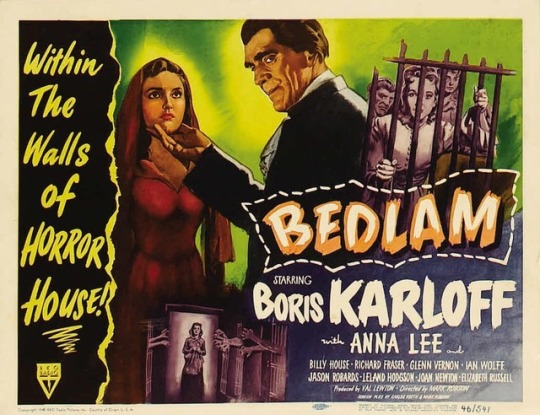
The subversive genius of Val Lewton . . . #vallewton #vallewtonhorrorcollection #bedlam #boriskarloff #classichorror #asylum (at America/Indiana/Indianapolis)
0 notes
Photo

I still have a few screen print copies left of my Val Lewton - The 7th Victim piece. If you are local you can catch me @millshardwarehamilton on August 18th for another chance to see it in person. 🔪💀🕸 #vallewton #classichorror #filmnoir #hamont #saradeck
0 notes
Photo
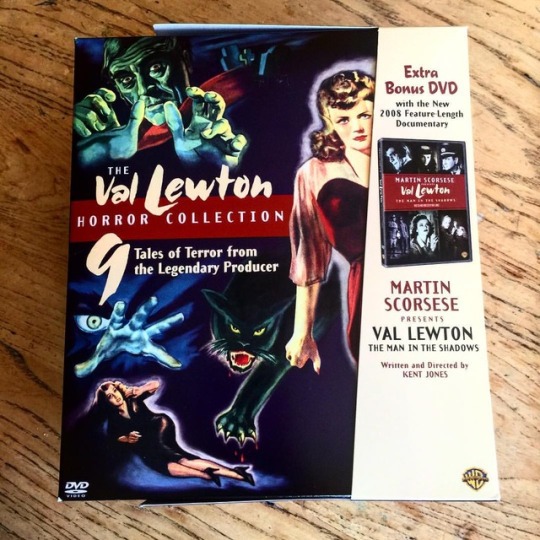
Score! The $100 out of print Val Lewton box set snagged for only $26 ! Though now I have an extra copy of the cat people/curse of the cat people dvd (aaaand a criterion Blu-ray of Cat People, oh and the Paul Schrader version... wait am I becoming a hoarding Cat (People) Lady?! #vallewton #classic #film #cultclassic #noir #horror #catpeopleproblems #catpeople #classicfilm https://www.instagram.com/p/BnSF1FknRy3/?utm_source=ig_tumblr_share&igshid=14nh0uiuxr7eq
0 notes
Text
Horror in Shadow: CAT PEOPLE Turns 75
New Post has been published on https://nofspodcast.com/horror-shadow-cat-people-turns-75/
Horror in Shadow: CAT PEOPLE Turns 75
When we think of classic horror — real vintage, black and white horror of the 30s and 40s, we don’t often think scary. We think of the Universal Monsters. Deservedly lauded and beloved as those films are, they aren’t particularly frightening. Universal’s horror output was revolutionary, heavy on atmosphere, brimming with brilliant themes and bold character studies. But their monsters were so in your face, the primary effect was more disturbing than chilling.
Having been raised on the Universal Monster films, I never expected a horror film from the 40’s to genuinely scare me. I love Universal Horror, and the silent horror before. I love campy 50’s horror and the technicolor dreams of Hammer Horror. But in my mind, these are all about the glorious atmosphere. As a young horror fan, I always assumed truly scary horror began in the 60’s and came to full fruition in the 70’s. All that changed when I saw Cat People (1942).
To be specific, I saw a clip of Cat People. I was a teenage film nerd, turning on TCM after school as I often did. The channel was between features, and so I tuned in smack in the middle of a featurette about sound design. They were highlighting the scene in which Alice is swimming in her apartment’s basement pool.
The clip was short, not even the entire sequence. But I was terrified. The scene thrilled me in a way I expected from modern horror, but this was a film from 1942! I had to find out more. I immediately looked into the film and became enamored with the work of horror producer Val Lewton, whose filmography under RKO in the 40’s paved the way for modern horror.
December 6th marks the 75th anniversary of Cat People’s release. This film stands as a significant moment in the history of horror, and the first film and most famous film of Lewton’s brilliant career in the genre.
Unexpected Beginnings
Producer and horror visionary Val Lewton.
Val Lewton was a novelist and screenwriter working in Hollywood when RKO studios picked him to head a new horror unit in 1942. RKO saw how Universal was raking it in with their horror films, and wanted to see if they could repeat that success on a shoestring budget.
Lewton was tasked with producing films under three rules; 1. Each film would cost less than $150,000, 2. Each film would run under 75 minutes, 3. Each film would be built around studio provided, focus grouped titles.
Lewton took these potentially limiting parameters and produced incredibly smart, scary, and innovative horror. Cat People had a B-Movie title and a budget of just $134,000. But it is a revolutionary piece of horror film-making with scares that still hold up to this day.
Hidden in Shadow
In fact, Cat People is a unique example of a true genre maker. The way it builds tension and delivers scares directly influenced some of the most iconic modern horror films. Cat People also created tropes still in use in the best horror today.
Lewton made Cat People with his three time collaborator, director Jaques Tourner. Tourner would go on to direct film noir, and he imbued that genre’s signature style into the horror he made with Lewton. Cat People uses shadow, darkness and light to incredible effect.
Unlike the German Expressionist influences that ruled Universal Horror, Lewton’s films never felt fantastical or dreamlike. Rather, like film noir, they remained very grounded in the real world. But it’s a real world filled with shadows and darkness. Terrifying things hide just on the edges of everyday life, unseen, but threatening to seep into our world.
This base believe-ability is essential to what makes Cat People and the other films produced by Lewton so frightening. By making his films about average people in the contemporary world (the 1940’s, at the time), Lewton gave the sense that horror could befall anyone. It’s difficult to watch Frankenstein (1931) and imagine it’s events occurring in your own life. But Lewton’s films never offer that removal. This is the first major way Cat People paved the way for modern horror.
The Curse of the Past
Cat People follows Irena Dubrovna (Simone Simon), a Serbian immigrant and fashion designer living in New York. While sketching a black panther in the Central Park Zoo, she meets Oliver Reed (Kent Smith), an engineer. They begin dating, and Oliver falls hard for her. Irena has her quirks, however. She is obsessed with legends surrounding her home village in Serbia. According to the stories, the village population turned to witchcraft during the medieval period, only to be killed by King John of Serbia. But a portion of the population escaped to the mountains, and their descendants survived.
Strange events surround Irena. Oliver buys her a kitten for a present, but the previously friendly animal becomes frightened and vicious the moment it sees her. When they visit the pet shop to return the kitten, the animals all screech in terror and rage at the site of Irena.
Oliver eventually proposes to Irena. To celebrate their wedding, they dine with friends at a Serbian restaurant. Snow falls beautifully outside, and the scene is festive and cozy. But a strange woman with cat-like features keeps staring at the table. In the middle of the revelry, she approaches and calls Irena “moya sestra,” before leaving. Irena, clearly shaken, explains it is Serbian for “my sister.”
The slow burn creepiness at work in the first act of Cat People is central to the style of Lewton’s films, and a significant influence on modern horror. The horror renaissance of the 60’s and 70’s was heavily built on the same structure. A succession of small, eerie events set the scene and build tension. The tension itself serves as the primary driving force that makes the eventual horror so effective.
Buses and Basements
After their marriage, Irena refuses any physical intimacy with her husband. It soon becomes clear that she believes she bears the curse of her village. She fears that passionate feelings or love, lust or rage could transform her into a deadly cat creature.
Oliver is concerned and compels his wife to begin seeing a psychiatrist. However, Dr. Louis Judd (Tom Conway) doesn’t seem too concerned with Irena’s well being. His attitude toward her is patronizing and predatory.
Meanwhile, Oliver, frustrated with the stress of his wife’s apparent mental illness, begins to grow closer to his coworker, Alice Moore (Jane Randolph). Irena discovers her husband’s betrayal, and Alice begins to sense something not quite human is stalking her.
Alice is the center of Cat People’s two most famous, and influential, sequences. The first of which birthed a technique that’s become an iconic horror trope.
Alice is walking home alone at night through Central Park. We see Irena begin to follow her. Each woman moves in and out of shadow, the sound of Irena’s heels clicking on the pavement as she follows her rival.
Finally, Irena moves into shadow, and the sound of her shoes stops. She doesn’t emerge. Alice becomes suddenly uneasy. She glances back at the dark and empty street behind her. Frightened, she begins to run. The camera closes up on her panicked face as a soft growl begins to emerge from behind her. The growl builds to a sudden hiss — that turns out to be the breaks of a bus pulling up to the stop. Alice, and the audience, jump at the sound, only to be relieved that its source is entirely harmless. But as Alice boards the bus, she glances warily at the rustling bushes behind her.
The technique of foreboding tension building to a harmless jump scare is well known to horror fans as a “cat scare.” The name derives from the frequent culprit behind the false fright being a noisy feline. The cat version has been overused to the point of parody, but the general structure of tension moving into a harmless jump scare to relieve the tension is still widely used. It’s simply a very effective way to create fear.
But before it was known as a “cat scare,” this trope was called a “Lewton Bus.” That’s because its trailblazing, and probably first use, was during this scene in Cat People. Lewton would use similar scares throughout his horror filmography, but this very effective example is also his first.
The other most iconic and influential scene comes later in the film. Alice is taking a nighttime swim in her apartment’s basement pool. She turns off the lights and prepares to leave, when a mysterious growling sound on the stairwell frightens her. Panicked, she jumps back into the pool for safety. As she glances around her, we see nothing but the moving shadows cast by the illuminated pool in the darkened room. A foreboding growl seems to move around the pool, but Alice and the viewer cannot see the creature from which it’s coming. Some of the shadows move in ways that seem independent of the water.
The scene is drawn out, bringing the viewer to the same precipice of panic as Alice. Finally, the growl becomes a vicious snarl and Alice begins to scream for help. The camera cuts to various dark corners of the room and ceiling as we hear Alice’s screams echo — a chilling effect. Finally, a human and seemingly harmless Irena turns on the light and asks “What is the matter?” It’s one of the scariest scenes in classic horror, and we never see anything but shadow.
The Horror of the Unseen
Much of the genius of the horror in Lewton’s films originated with budget constraints. The extremely low budget of Cat People couldn’t afford the dramatic special effects and makeup that would be required to show the creature. But this limitation actually worked well with Lewton’s idea of horror.
Lewton was an early proponent of the idea that what the audience can’t see is always scarier than what they can. In this way he welcomed his budget constraints as an opportunity to create horror that he believed would be far more effective than the Universal approach. His “less is more” approach pioneered techniques that made films like Jaws and Halloween work as well as they do.
If you haven’t explored Val Lewton’s filmography, Cat People is the perfect place to start. It demonstrates Lewton’s creativity — showing the innovation he could bring out of limitations. It’s short, smart, atmospheric, and frightening. If scary is something you don’t normally expect out of vintage horror, I suggest you give Lewton’s films a try. You may find yourself surprised by how much they haunt you.
#Cat People#cat people 75#cat people 75th anniversary#classic horror#horror anniversary#iconic horror#influential horror#Simone Simon#ValLewton#vintage horror
0 notes
Video
Hoy a las 19h. en #CineEstudio #lamujerpantera en #vose. Abono de 5 sesiones x 18€ disponible en taquilla. Ciclo #vallewton en septiembre.
1 note
·
View note
Photo

I’m not sure it’s the reaction they want me to have, but my hot take is Oliver turned out to be a shitty dad and a crap husband, Alice should have know better after the first film not to marry him in the first place. #catpeople #vallewton #horror #cultclassic #film (at West Seattle, Seattle)
0 notes